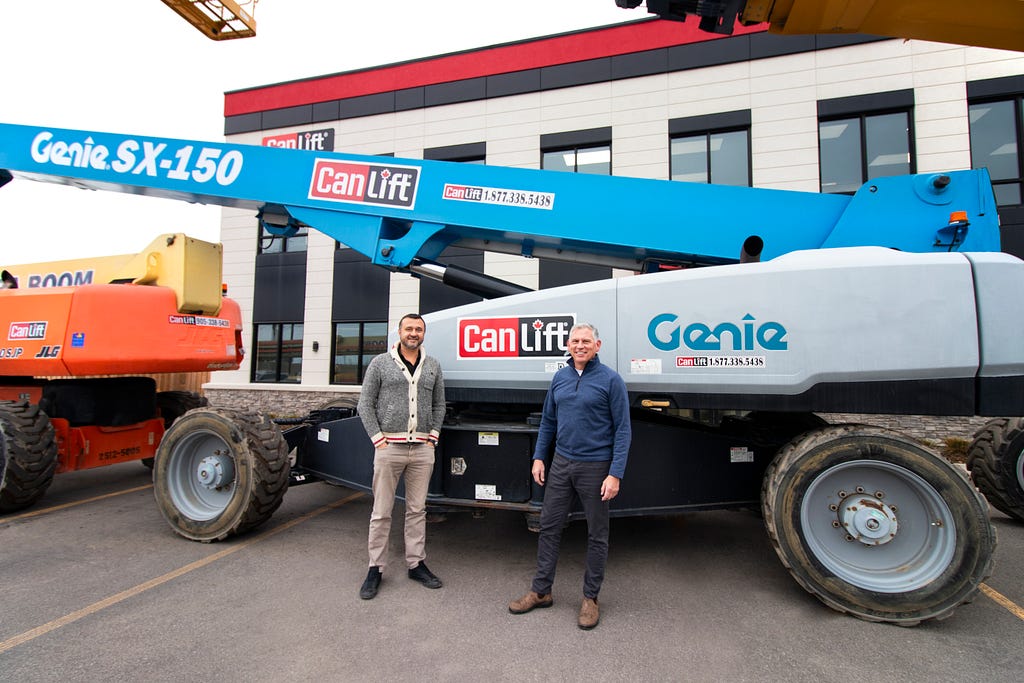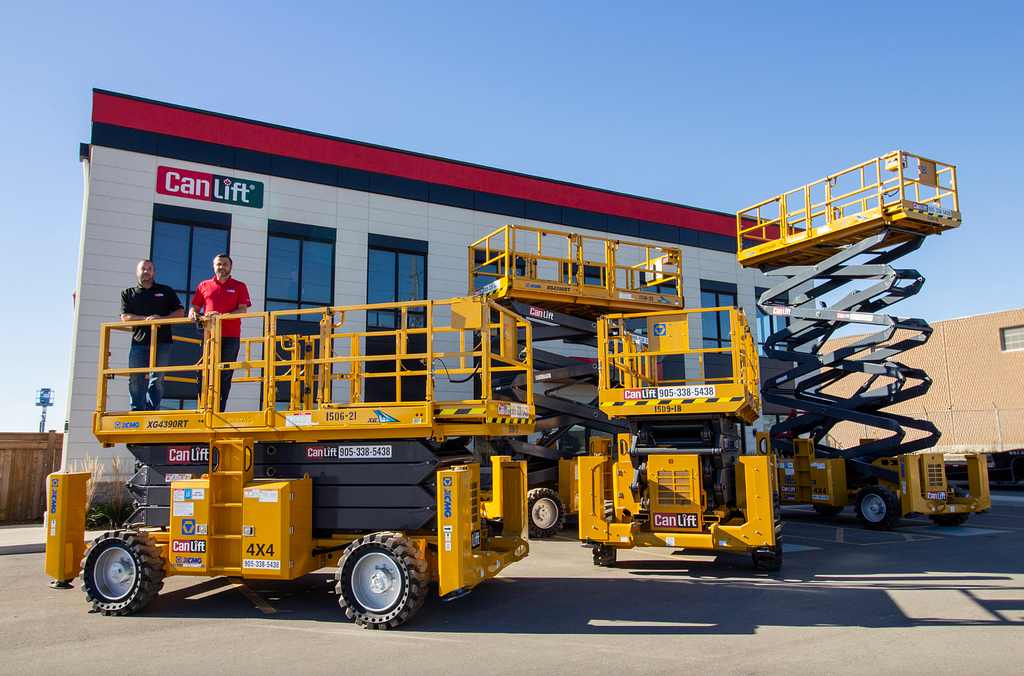Operational Scalability: Johnny Dragicevic of CanLift Equipment On How To Set Up Systems, Procedures, And People To Prepare A Business To Scale

Develop a financial plan that includes budgeting, cash flow management, and securing adequate funding for growth. Understand the financial implications of scaling and plan for sustainability.
In today’s fast-paced business environment, scalability is not just a buzzword; it’s a necessity. Entrepreneurs often get trapped in the daily grind of running their businesses, neglecting to put in place the systems, procedures, and people needed for sustainable growth. Without this foundation, companies hit bottlenecks, suffer inefficiencies, and face the risk of stalling or failing. This series aims to delve deep into the intricacies of operational scalability. How do you set up a framework that can adapt to growing customer demands? What are the crucial procedures that can streamline business operations? How do you build a team that can take on increasing responsibilities while maintaining a high standard of performance? As part of this interview series, I had the pleasure of interviewing Johnny Dragicevic.
Johnny Dragicevic is one of CanLift’s original founders. With a proven track record in sales and marketing, Johnny’s entrepreneurial spirit and commitment to innovative strategies have propelled CanLift to prominence as one of Ontario’s largest independently owned lift equipment providers. As Managing Partner, he oversees all aspects of business operations and drives sales initiatives.
Thank you so much for your time! Our readers would love to get to know you a bit better. Can you tell us a bit about your ‘backstory’ and how you got started?
I started in the construction industry by chance. My wife and I were expecting our first child back in 2007, and at the time I was working full-time in real estate. I was handling most of my business in the evenings and weekends, so I decided to pick up a flexible side job to offset my wife’s maternity leave.
At the same time, my brother was working for a small, family-run rental company so I decided to help with deliveries, sales initiatives, and general administrative support. It was a small business, so I got to wear many hats and learn the ins and outs quite quickly.
Fast forward two years, the recession hit, and operations slowed at the rental company to the point that we parted ways. I was planning on sticking to the real estate industry when two of my high school friends suggested we put some funds together and start our own equipment rental company. And so, in the spring of 2009, CanLift was born! The equipment we needed to launch was in abundance and discounted heavily, so we were fortunate to get involved at a good time.
It has been said that our mistakes can be our greatest teachers. Can you share a story about the funniest mistake you made when you were first starting? Can you tell us what lesson you learned from that?
In the early days of our entrepreneurial journey, we were fueled by enthusiasm which led to starting our company without any business plan. It was a classic case of ‘spur-of-the-moment’ decision-making.
We truly went from an idea to opening our doors in a matter of days — we found a location, hastily signed what we believed was a reasonable lease, and the ‘open’ sign was up before we knew it. Looking back, it’s comical how little thought we put into critical aspects such as growth, infrastructure, and budgets. We outgrew the building in months!
While the initial oversight can now be funny in retrospect, it served as a valuable lesson. From that point forward, we approached every decision with careful consideration and a strategic mindset, ensuring that we laid a solid foundation for our business to thrive in the long run.
What do you think makes your company stand out?
What makes CanLift stand out is our distinctive identity as an independent, family-owned company.
In a market dominated by multinationals and private equity, CanLift’s accessibility, hands-on approach, and commitment to customer satisfaction set us apart from our competitors. We navigate the construction landscape with agility and responsiveness that larger corporations often can’t and don’t match. Being a family-owned business is a core aspect of our organizational makeup. This familial connection elevates our operations with a sense of shared values.
You are a successful business leader. Which three character traits do you think were most instrumental to your success?
My success boils down to three key traits: self-confidence, adaptability, and a risk-aversive mindset.
In an extremely competitive industry, being able to trust your instincts and having the courage and industry know-how to tackle problems head-on is essential. Adaptability is another key success driver. I’ve learned it’s critical to roll with the punches and pivot when needed. Whether you’re responding to market shifts or unexpected supply chain issues and labour shortages, adaptability keeps us ahead of the curve. Lastly, being able to assess risk meticulously helps aid me in making informed decisions that benefit the business.
Leadership often entails making difficult decisions or hard choices between two apparently good paths. Can you share a story with us about a hard decision or choice you had to make as a leader? I’m curious to understand how these challenges have shaped your leadership.
Leaders are poised with making decisions and a lot of the time, you are choosing between two promising but divergent paths. I’ve realized what’s important is making a decision. You weigh the pros and cons, consider the potential risks and benefits, and eventually make a choice.
Even if the decision turns out to be the wrong one, it’s an opportunity for growth and learning. Rather than dwelling on the perceived failure, I embrace it as a valuable lesson.
This journey taught me that indecision is a path to nowhere. It’s about having the courage to make tough choices and acknowledging that mistakes are inevitable.
Thank you for all that. Let’s now turn to the main focus of our discussion about Operational Scalability. In order to make sure that we are all on the same page, let’s begin with a simple definition. What does Operational Scalability mean to you?
In essence, it’s about fostering growth seamlessly, whether that involves onboarding new team members, integrating new systems, or introducing advanced equipment, all while remaining within budget. The key lies in ensuring that these new elements align harmoniously with your existing framework, minimizing friction and maximizing efficiency.
Operational scalability is not about expansion for expansion’s sake, but about doing so logically and cohesively. It boils down to increasing momentum while ensuring that growth remains both sustainable and cost-effective.
Which types of business can most benefit from investing in Operational Scalability?
I believe that operational scalability is a crucial aspect of the success of virtually any business. Ultimately, the degree of benefit depends on the specific goals set by management or ownership.
Why is it so important for a business to invest time, energy, and resources into Operational Scalability?
Operational scalability ensures adaptability to changes, allowing quick adjustments to market shifts and disruptions. Businesses need to invest time, energy, and resources into operational scalability because it ensures that they can maintain growth once it is achieved.
In contrast, what happens to a business that does not invest time, energy, and resources into Operational Scalability?
A business that doesn’t prioritize operational scalability faces several challenges — it can lead to stagnation, operational inefficiency, and missed growth opportunities. Plus, the danger of falling behind competitors and becoming irrelevant in a competitive market.

Here is the primary question of our discussion. Based on your experience and success, what are the “Five Most Important Things A Business Leader Should Do To Set Up Systems, Procedures, And People To Prepare A Business To Scale”?
- Establish a strong foundation with a clear vision and goals. Formulate a vision that outlines the long-term direction of the business (and ensure it’s communicated throughout the company!). Set specific, measurable, achievable, relevant, and time-bound (SMART) goals to provide a roadmap for achieving the vision. Defining a mission statement and company values also act as guiding principles for decision-making.
- Invest in hiring and developing the right people. Prioritize hiring not only based on current needs but also with an eye on the future scalability of the business. Look for people who are adaptable, innovative, and growth oriented. It’s also extremely important to foster a culture of continuous learning through training programs and opportunities for skill enhancement.
- Implement scalable systems and processes without compromising quality or efficiency — this includes investing in technology that can grow with the business. Plus, don’t forget to regularly review existing processes to identify bottlenecks and inefficiencies.
- Define Key Performance Indicators (KPIs) that align with your business goals. These KPIs should provide insights into various aspects of the business — sales performance, customer satisfaction, and operational efficiency. Establish a regular cadence for tracking and analyzing KPIs, so that you can use data-driven insights to make informed decisions.
- Develop a financial plan that includes budgeting, cash flow management, and securing adequate funding for growth. Understand the financial implications of scaling and plan for sustainability.
What are some common misconceptions businesses have about scaling?
That it’s an easy and fast process. Scaling demands much more than simply increasing operations. It’s a complex undertaking that requires a clear business objective, a well-executed strategy, and a knowledgeable team that can effectively implement it.
How do you keep your team motivated during periods of rapid growth or change?
I firmly believe in maintaining a hands-on approach to leadership. As an owner, it’s extremely important to be constantly engaged with your team beyond traditional management and delegation roles. I make a conscious effort to be present on the ground whether it’s picking up a wrench, washing a machine, or sweeping the floors in the shop.
During times of high demand or rapid change, I assist in handling overflow calls and administrative tasks (even those considered mundane). This not only lightens the workload for the team but reinforces the idea that we’re all in this together. Having a great team is one thing but being part of that team and showing it, is another.
Can you please give us your favorite “Life Lesson Quote”? Can you share how that was relevant to you in your life?
My favourite life lesson quote is, “You can’t change what happened yesterday. Don’t dwell on the past — look to the future.”
This quote serves as a reminder of the importance of resilience. We all encounter setbacks and challenges, and it’s easy to get caught up in missed opportunities or regrets. However, dwelling on the past can hinder personal growth and opportunities for the future, which is no way to live!
You are a person of great influence. If you could start a movement that would bring the most amount of good to the most amount of people, what would that be? You never know what your idea can trigger.
I would spearhead a movement that encourages personal growth and resilience with a focus on creating sustainable initiatives that incentivize individuals, families, and working-age groups. This can be achieved through educational opportunities beyond secondary school, skill development programs, and fostering entrepreneurship. Let’s create positive, lasting change in our communities and break the cycle of poverty.
How can our readers further follow your work online?
You can follow CanLift’s journey through our website and on social media. Thanks for having me!
- https://www.canlift.ca/
- https://www.instagram.com/canliftequipment/
- https://www.linkedin.com/company/canlift-equipment-ltd./
Thank you so much for sharing these important insights. We wish you continued success and good health!
Operational Scalability: Johnny Dragicevic of CanLift Equipment On How To Set Up Systems… was originally published in Authority Magazine on Medium, where people are continuing the conversation by highlighting and responding to this story.
